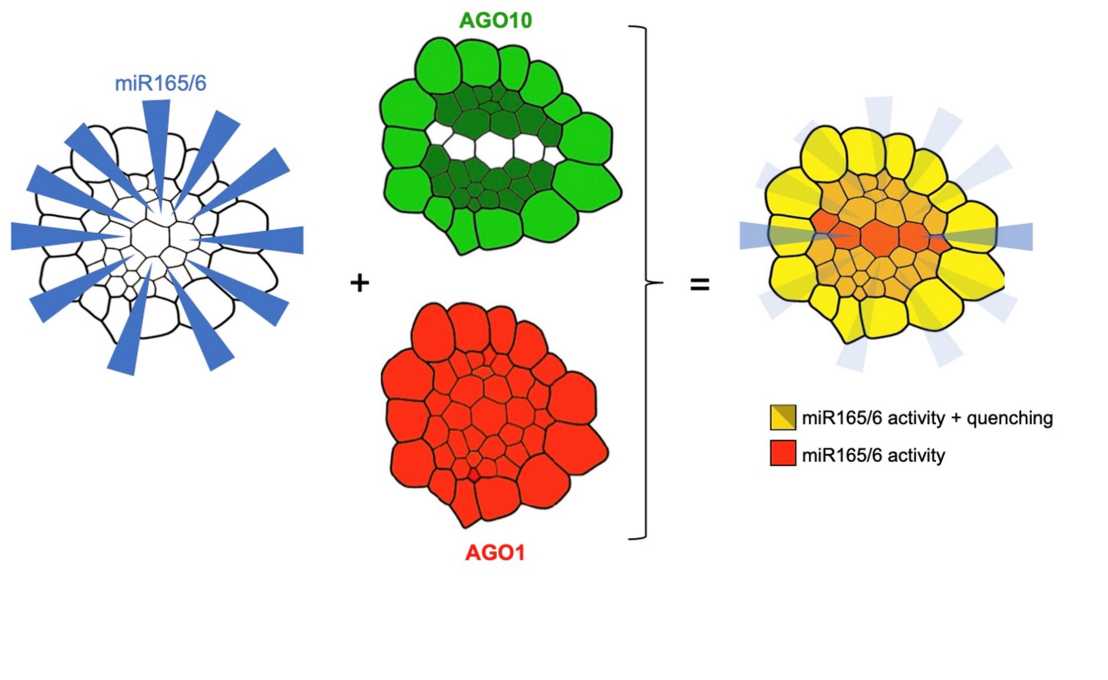ARGONAUTE 10 allows proper miR165/6 gradient formation along the root xylem axis
A recent publication in EMBO Journal by the Voinnet group (IMPB) addresses the conundrum of how to create a linear gene expression gradient out of a radially-moving silencing small RNA in Arabidopsis.

Plant small interfering (si)RNAs and micro (mi)RNAs exert their RNA-repressive functions via ARGONAUTE (AGO) effector proteins. Remarkably both molecules can move between cells as AGO-free duplexes. Instructive gradients of mobile miRNAs, in particular, help specify cell identify. How such gradients are modulated and shaped in space and time remains unclear, however.
This work shows that AGO10 controls root meristem length and additionally regulates xylem differentiation in the developing root vasculature. Both functions entail AGO10’s selective high-affinity for mobile miR165/166. The AGO10-bound miR165/166 pool undergoes enhanced turnover, effectively quenching miR165/166 silencing activity via AGO1, the main Arabidopsis miRNA effector. The work further establishes how dynamic control of AGO10’s spatio-temporal distribution within the vascular cylinder (stele) modulates and refines a gradient of the miR165/166 target, PHABULOSA (PHB).
During early germination, PHB transcription increases while dynamic mechanisms reduce and confine ARGONAUTE10 accumulation to the pro-vascular cells surrounding the newly-forming xylem axis. Adequate miR165/166 concentrations are thereby channeled along the ARGONAUTE10-deficient yet ARGONAUTE1-proficient axis. Consequently, inversely-correlated miR165/166 and PHB gradients form preferentially along the axis despite ubiquitous PHB transcription and widespread miR165/166 delivery inside the whole vascular cylinder.
Link to the paper in external page external page"EMBO Journal"